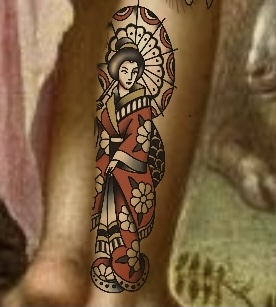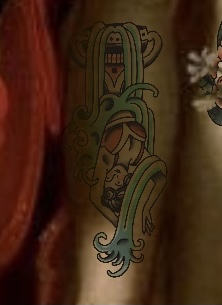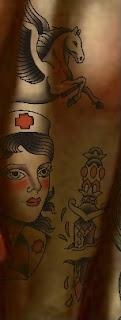The Judgement of Paris - Joachim Wtewael
RESEARCH
The story began with the wedding of Peleus and Thetis which all the gods had been invited to attend except for Eris, goddess of discord. When Eris appeared at the festivities she was turned away and in her anger cast the golden apple amongst the assembled goddesses addressed "To the Fairest." Three goddesses laid claim to the apple--Aphrodite, Hera and Athena. Zeus was asked to mediate and he commanded Hermes to lead the three goddesses to Paris of Troy to decide the issue. The three goddesses appearing before the shepherd prince, each offering him gifts for favour. He chose Aphrodite, swayed by her promise to bestow upon him Helene, the most beautiful woman, for wife. The subsequent abduction of Helene led directly to the Trojan War and the fall of the city.
Instead of the Greek mythology, this painting depcits the same story but in Roman mythology with goddesses' Minerva, Juno and Venus.
THE TROJAN WAR
MINERVA
- Goddess of handicrafts, the professions, the arts and defensive/strategic war as well as music, poetry, medicine, wisdom, weaving and crafts
- "Owl of minerva" symbolic of her wisdom and knowledge which is also the case with the image of the snake and the olive tree (she created the olive tree)
- Often depicted in armour and carrying a spear
- Minerva emerged from Jupiters head in full battle armour, saved by her mother titaness Metis who was transformed into a fly
- Minerva and Arachine - Transformed a woman into a spider as punishment for challenging her in a weave off. Acted as a warning to mortals to not challenge the gods
- Minerva and Medusa - Found Neptune and Medusa kissing in her temple. Minerva turned Medusa into the monster we're all fimiliar of as well as giving her the ability to turn and living creature to stone. Perseus ended up returning Medusa's head to Minerva after he slayed the monster - the blood from this act of killing is what formed Pegasus. With her head, Minerva fixed it onto her Aegis
- Minerva assisted Hercules in slaying the Hydra
- She invented the flute
- Minerva's name shares its root with Manasvini, a hindu diety associated with virtue, intelligence and the moon
- Known as the virginal goddess
- Minerva hatched the plan that led to the sack of Troy; she implanted the Trojan horse idea in Ulysses head. Minerva also send 2 sea serpents to kill Laocoon's sons and him
- Offered the shepard skill in battle and wisdom of the best warriors in exchange for the golden apple
JUNO
- The protector of the state
- A daughter of Saturn, wife of Jupiter (also her twin brother) and mother of Mars, Vulcan, Bellona and Juventas
- Her sacred animal is a peacock
- Watches over the women of Rome
- Usually presented armed and wearing a goatskin cloak
- Goddess of marriage, vital force, energy and eternal youthfulness
- One of the three original gods
- The moon goddess
- Juno had sacred geese that would warn the Roman military of invaders
- Juno presided over every aspect of a womans life
- Gave birth to Mars who was concieved by a magical flower given to Juno by Flora, the goddess of Spring.
- Offered the shepard ownership of all of Europe and Asia in exchange for the golden apple
PARIS
- Paris was a trojan prince
- Son of King Priam and Queen Hecuba of Troy
- Fatally wounds Achilles in the heel with an arrow
- Mother dreamt that she gave birth to a flaming torch meaning that her child would be the downfall of Troy. Due to this he was left on Mount Ida to defeat the prophecy, but instead was saved and nurtured by a she-bear
- Whilst a child, he rooted gangs of cattle thieves and returned the stolen animals
- Paris' first loved was Oenone, a nymph from Mount Ida who was skilled in prophecy and medicine
- Paris offered a golden crown to whoever could beat his bull. Ares responded by turning himself into a bull and then killing Paris' bull

























Comments
Post a Comment